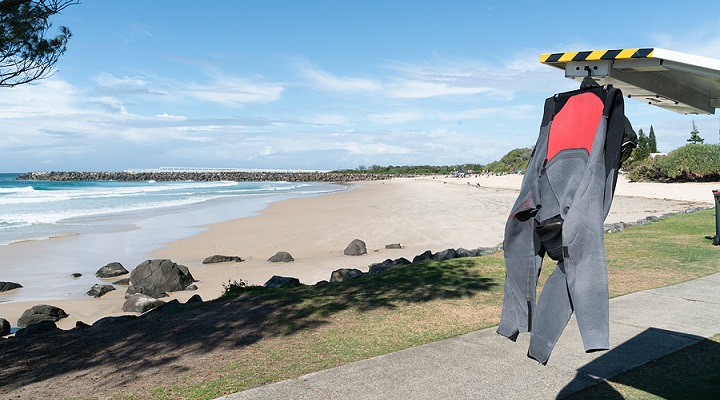Leading surf brand Rip Curl will start taking back old wetsuits in overseas markets and recycling them into soft-fall matting in playgrounds and outdoor gyms after successfully launching and scaling the recycling program in Australia. The program is in partnership with TerraCycle, a US-based recycling business that specialises in repurposing hard-to-recycle materials. “We will be expanding the program to our customers in the US, France, Spain and Portugal very soon, which is so very exci
y exciting,” Shasta O’Loughlin, Rip Curl’s environmental, social and governance manager, told Inside Retail.
“As the ‘ultimate surf company’, this expansion will assist more of our customer’s journey [towards] reducing their environmental impact and we are stoked to support in doing just that.”
The brand first started taking back old wetsuits at its flagship store in Torquay, Victoria, in 2018. Since then, it has expanded the program to 27 stores nationwide and taken back more than 2500 wetsuits, or the equivalent of around three tonnes of neoprene.
“In the beginning, we weren’t sure how many surfers would engage in the program, however, it has proven successful with some customers driving several kilometres to hand back their suits in-store or paying large postage fees to get them back to us,” O’Laughlin said.
She noted that the program represents a significant investment for Rip Curl in terms of both time and money.
“We are doing this as a commitment to embedding more circular concepts into our brand and operations,” she said.
Solving the problem of wetsuit waste
The global wetsuit market is currently valued at more than US$3.5 billion and expected to reach US$4.6 billion by 2028. But while this growth is good for surf brands like Rip Curl, it represents a significant problem for the environment.
Wetsuits tend to wear out after around two years of regular use, and because they’re typically made out of neoprene, a type of synthetic rubber that can’t be broken down and recycled like other plastics, there’s no easy way to dispose of old suits responsibly.
“They either end up in opportunity shops or piled up in a cupboard in people’s garages as they don’t know what to do with them, and eventually in the general waste bin then landfill,” O’Laughlin said.
Some smaller brands, including Sydney-based Project Blank and British brand Finisterre, are trying to solve this problem by making wetsuits out of alternative materials, such as Yulex, a plant-based foam rubber that is biodegradable.
But for the majority of wetsuits that are still made out of neoprene, takeback schemes may be the best option.
Under Rip Curl’s program, customers can drop off their old wetsuits at participating stores, or send them via post to the brand’s head office in Torquay. Once the company has collected 20 pallets’ worth of wetsuits, it sends them to TerraCycle’s warehouse, where any zips, elastic pulls and metal tags are removed by hand. They are then sent to a processor for crumbing, before ultimately being repurposed into soft-fall matting.
Rip Curl covers all the costs associated with the recycling process and accepts any brand of wetsuit, not just its own products. The expansion of the program comes in response to growing consumer demand.
“We are seeing more demand for an increase in sustainable product offerings and programs,” O’Laughlin said.
“Providing services to repair damaged suits has always been a priority and now with the expansion of the takeback program to 27 stores across Australia, we feel we are supporting our customers even further.”
Going forward, sustainability expert and co-founder of The Purpose Agents Anna Forster believes more brands will start taking back and recycling their old products as the cost and complexity of these schemes declines.
“I think most brands do not yet have a full understanding of the cost, but I think there is growing awareness around the level of complexity,” she told Inside Retail.
“In the future, I see demand rising through more voluntary action from brands driven by customer demand, but also through further regulation in the space.
“This regulation will mandate responsibility from brands for the product they are bringing into the world all the way through its lifecycle and will generate real volume.”

